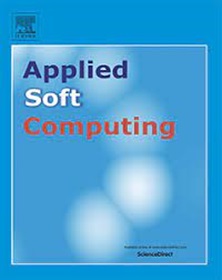Towards sustainable societies: Convolutional neural networks optimized by modified crayfish optimization algorithm aided by AdaBoost and XGBoost for waste classification tasks
IF 7.2
1区 计算机科学
Q1 COMPUTER SCIENCE, ARTIFICIAL INTELLIGENCE
引用次数: 0
Abstract
The categorization of waste is playing a pivotal role in addressing and alleviating the environmental and health repercussions linked to waste. It is essential for safeguarding the environment, as improper handling of hazardous waste may result in soil, water, and air contamination, posing significant threats to ecosystems and human well-being and maintaining a sustainable society. Effective waste classification enhances the efficacy of waste management by organizing waste into distinctive groups based on characteristics that include toxicity, flammability, recyclable potential, and biodegradability. This research introduces a methodology that relies on employing convolutional neural networks and the AdaBoost and XGBoost models for the purpose of waste classification. It emphasizes the necessity of customizing every deep learning method to suit the specific problem that needs to be solved. An altered form of the latterly proposed crayfish optimization algorithm is suggested, explicitly developed to meet the requirements of the particular waste classification task in hand. The assessment of the presented method using real-world datasets consistently demonstrates that models configured by the proposed modified algorithm achieve an accuracy level that exceeds 89.6140%. This pinpoints the considerable potential of this method in effectively addressing pressing problems in waste management within real-world scenarios.

面向可持续社会:由AdaBoost和XGBoost辅助的改进小龙虾优化算法优化的卷积神经网络用于垃圾分类任务
废物分类在处理和减轻与废物有关的环境和健康影响方面发挥着关键作用。它对保护环境至关重要,因为危险废物处理不当可能导致土壤、水和空气污染,对生态系统和人类福祉以及维持可持续社会构成重大威胁。有效的废物分类通过根据包括毒性、可燃性、可回收潜力和可生物降解性在内的特征将废物组织成不同的组来提高废物管理的效率。本研究介绍了一种基于卷积神经网络和AdaBoost和XGBoost模型的垃圾分类方法。它强调了定制每种深度学习方法以适应需要解决的特定问题的必要性。提出了最近提出的小龙虾优化算法的一种改变形式,明确地开发以满足手头特定垃圾分类任务的要求。使用实际数据集对所提出的方法进行的评估一致表明,由所提出的改进算法配置的模型达到了超过89.6140%的精度水平。这指出了这种方法在有效解决现实世界中废物管理的紧迫问题方面的巨大潜力。
本文章由计算机程序翻译,如有差异,请以英文原文为准。
求助全文
约1分钟内获得全文
求助全文
来源期刊

Applied Soft Computing
工程技术-计算机:跨学科应用
CiteScore
15.80
自引率
6.90%
发文量
874
审稿时长
10.9 months
期刊介绍:
Applied Soft Computing is an international journal promoting an integrated view of soft computing to solve real life problems.The focus is to publish the highest quality research in application and convergence of the areas of Fuzzy Logic, Neural Networks, Evolutionary Computing, Rough Sets and other similar techniques to address real world complexities.
Applied Soft Computing is a rolling publication: articles are published as soon as the editor-in-chief has accepted them. Therefore, the web site will continuously be updated with new articles and the publication time will be short.
 求助内容:
求助内容: 应助结果提醒方式:
应助结果提醒方式:


